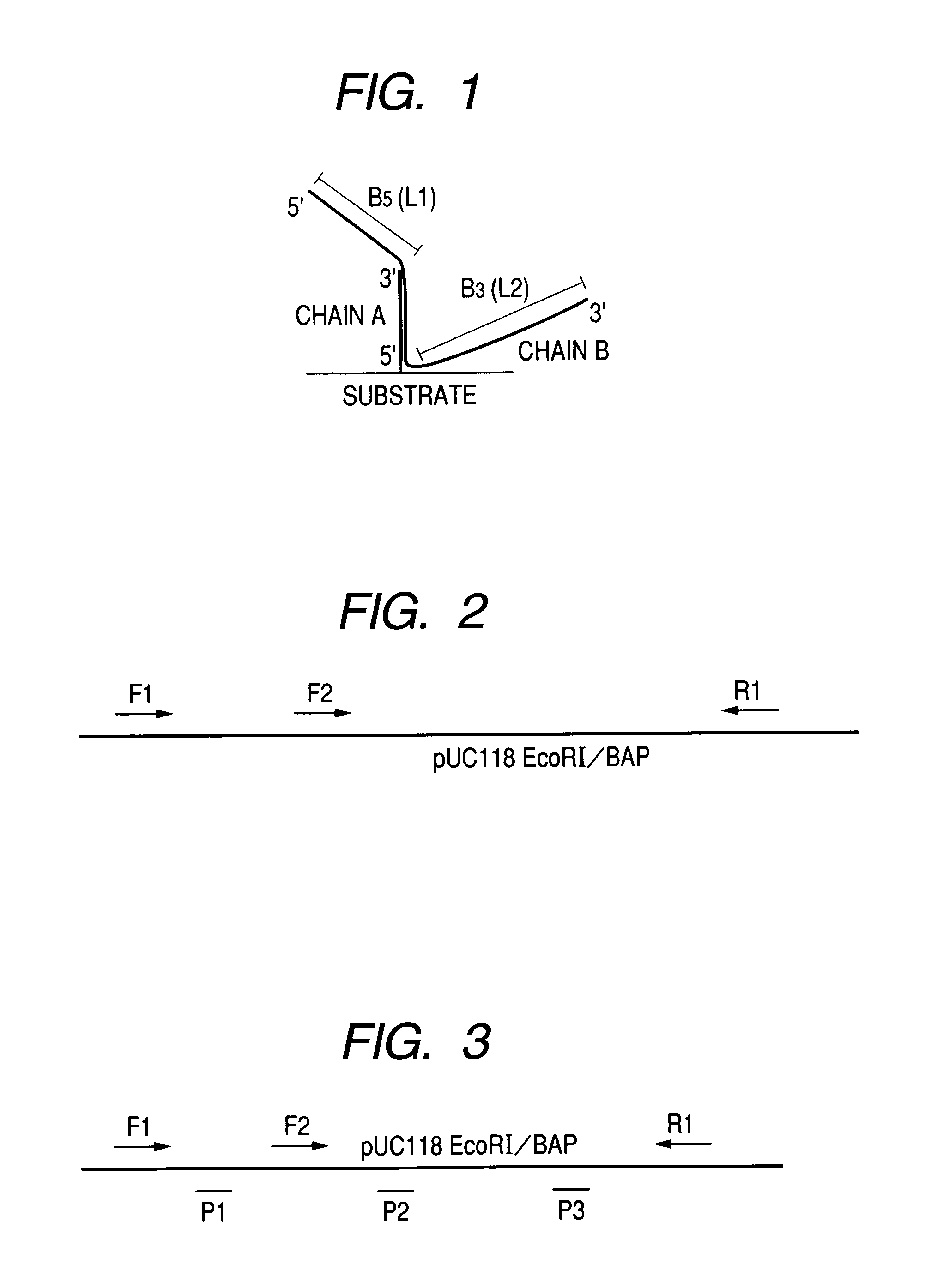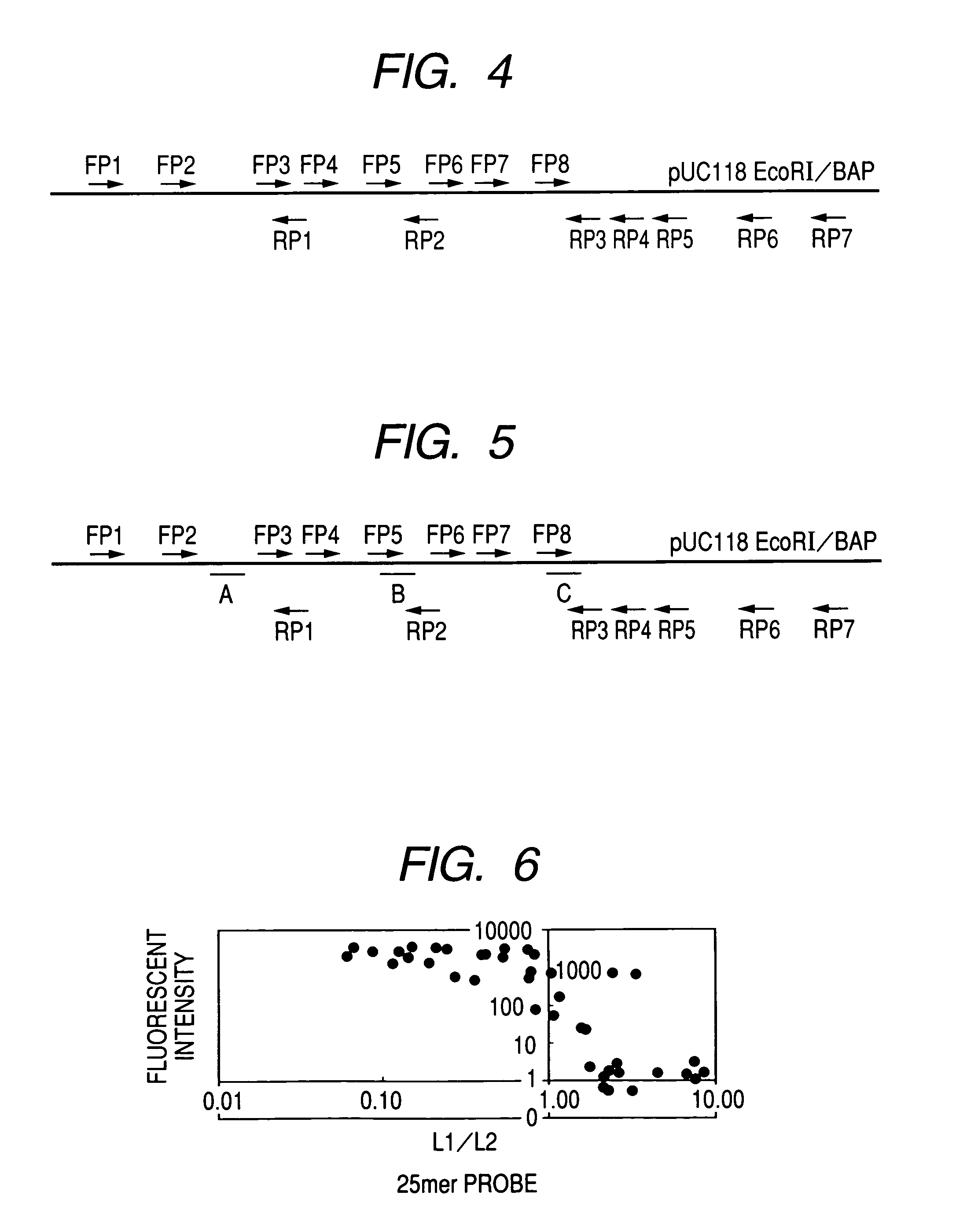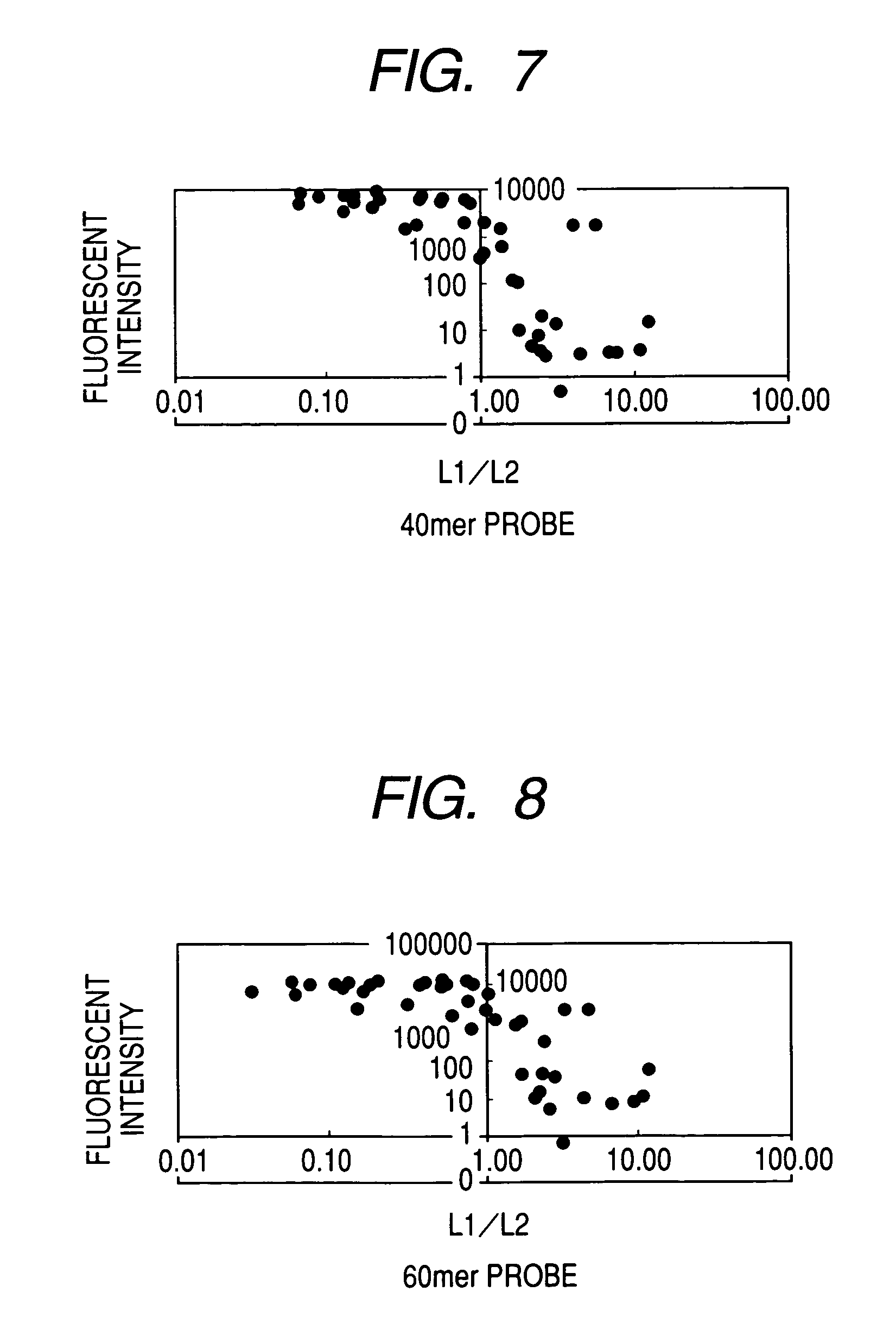Stable hybrid
a stable hybrid and hybridization technology, applied in the field of stable hybridization, can solve the problems of limited effect, reduced specificity of target binding, and insufficient sensitivity of conventional solid-phase hybridization detection methods, and achieve the effects of improving the detection method, and reducing the specificity of target binding
- Summary
- Abstract
- Description
- Claims
- Application Information
AI Technical Summary
Benefits of technology
Problems solved by technology
Method used
Image
Examples
example 1
I. PCR for pUC118 EcoRI / BAP
(1) Primer Design
[0081]As a model sample having a target sequence, a commercially available vector, pUC118 EcoRI / BAP of 3162 bp (manufactured by Takara) was chosen. Three primers having the following sequences were designed for the vector. The base-sequence data of full-length pUC118 EcoRI / BAP was given by Takara and also available from a database known to the public.
[0082]Primers were designed in consideration of base sequence, GC % and melting temperature (Tm) so as to specifically and efficiently amplify a desired portion of pUC118 EcoRI / BAP by PCR amplification.
[0083]Three primers: two forward primers (F1, F2) and one reverse primer (R1), were designed. When PCR amplification was performed by using pUC118 EcoRI / BAP as a template, and a set of primers, that is, a combination of F1 and R1 or F2 and R1, a PCR product of 1324 bp (PCR product 1) and a PCR product of 940 bp (PCR product 2) were obtained. The base sequence of each primer designed herein and t...
example 2
I. PCR for pUC118 EcoRI / BAP
(1) Primer Design
[0122]As a model sample having a target sequence, a commercially available vector, pUC118 EcoRI / BAP of 3162 bp (manufactured by Takara) was chosen. Primers having the following sequences were designed for the vector. The base-sequence data of full-length pUC118 EcoRI / BAP was given by Takara and also available from a database known to the public.
[0123]Primers were designed in consideration of base sequence, GC % and melting temperature (Tm) so as to specifically and efficiently amplify desired portions of pUC118 EcoRI / BAP by PCR amplification.
[0124]Fifteen types of primers including 8 forward primers (F1, F2) and 7 reverse (R1) primers were designed. PCR amplification was performed using various combination of forward primers and reverse primers and pUC118 EcoRI / BAP as a template. In this manner, when PCR amplification was performed with respect to all combinations of 8 forward primers and 7 reverse primers, various PCR products having a le...
example 3
(1) Design of Probe
[0159]Of nine probes designed in Example 2, three types of 25-mer probes were modified to have a thiol group at the 3′ end. A thiol group was introduced only to the 3′ end and not to the 5′ end.
[0160]Table 20 shows the name, base sequence, and Tm value of each of the three types of probes.
[0161]
TABLE 20NameSequence (5′→ 3′)Tm valueAR25ATGGTGCACTGTGAGTAGAATGTGC75.7SEQ ID NO: 24BR25GTGGGTTAGATGGAACTGGATGTGA75.8SEQ ID NO: 25CR25GATAAAGTTGCAGGAGCAGTTbTGG75.7SEQ ID NO: 26
[0162]The same as in Example 2, the sequence that hybridizes with each of the probes to form a hybrid is the complementary strand extending from a reverse primer.
[0163]An example of hybrids formed between each of the PCR products (target strand) synthesized in Example 2 and each of the three probes synthesized herein, is shown in FIG. 9, where the length of a target strand upstream the hybridized region is represented by B5 (L1) and that downstream the hybridized region is represented by B3(L2) The val...
PUM
| Property | Measurement | Unit |
|---|---|---|
| volume | aaaaa | aaaaa |
| width×75 | aaaaa | aaaaa |
| concentration | aaaaa | aaaaa |
Abstract
Description
Claims
Application Information
 Login to View More
Login to View More - R&D
- Intellectual Property
- Life Sciences
- Materials
- Tech Scout
- Unparalleled Data Quality
- Higher Quality Content
- 60% Fewer Hallucinations
Browse by: Latest US Patents, China's latest patents, Technical Efficacy Thesaurus, Application Domain, Technology Topic, Popular Technical Reports.
© 2025 PatSnap. All rights reserved.Legal|Privacy policy|Modern Slavery Act Transparency Statement|Sitemap|About US| Contact US: help@patsnap.com



